Marc Tyler Nobleman's Blog, page 84
March 31, 2014
The Big Bang Query
In March 2013, during the Q&A after an educators conference in Georgia, a huge fan of The Big Bang Theory suggested I send a copy of each book to the show.
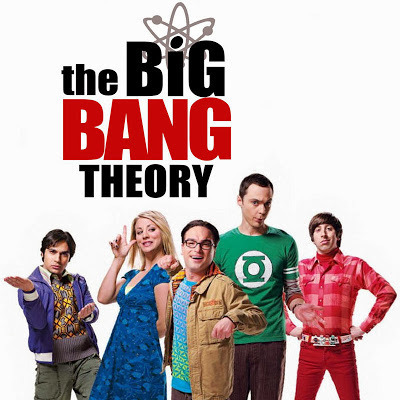
Though I don’t watch it (heresy!), I know it regularly references superheroes. I didn’t see what the producers might do with my books...yet this audience member kept kindly suggesting (almost insisting), and eventually I was convinced.
What did I want from this? Well, this woman seemed to think the true stories in these books could inspire a storyline on the show. I felt that is probably unlikely, but I am a never-hurts-to-try guy. In any case, I’d be thrilled if either or both could be added to the set, even if for just a scene. I believe they are the kinds of books the characters would own...
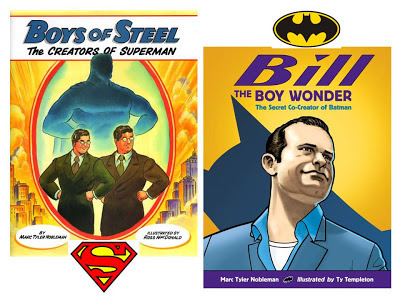
On Facebook, I asked if anyone in my network has a connection to anyone connected to the show, and within minutes, I heard from a friend who is friends with Kaley Cuoco’s makeup artist. She happened to be supremely nice, and offered to pass along my books, so I sent them to her. Every time I followed up, she was equally nice and complimentary.
As of now, nothing has come of it. But you can’t predict a big bang…

Though I don’t watch it (heresy!), I know it regularly references superheroes. I didn’t see what the producers might do with my books...yet this audience member kept kindly suggesting (almost insisting), and eventually I was convinced.
What did I want from this? Well, this woman seemed to think the true stories in these books could inspire a storyline on the show. I felt that is probably unlikely, but I am a never-hurts-to-try guy. In any case, I’d be thrilled if either or both could be added to the set, even if for just a scene. I believe they are the kinds of books the characters would own...

On Facebook, I asked if anyone in my network has a connection to anyone connected to the show, and within minutes, I heard from a friend who is friends with Kaley Cuoco’s makeup artist. She happened to be supremely nice, and offered to pass along my books, so I sent them to her. Every time I followed up, she was equally nice and complimentary.
As of now, nothing has come of it. But you can’t predict a big bang…
Published on March 31, 2014 04:00
March 30, 2014
Interview with co-author of Bob Kane’s autobiography
According to the official Warner Bros. release kicking off the 75th anniversary of Batman, he debuted (via Detective Comics #27) on March 30, 1939.
Also of note in that release: no use of the word “creator.”
In 1989, coinciding with Tim Burton’s Batman, Bob Kane’s autobiography came out.
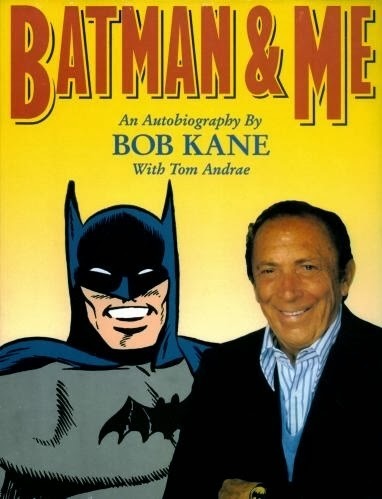
But as with most of the output Bob’s name is on, he did not create it alone. His co-author was Thomas Andrae, who through my Bill Finger research became a friend.
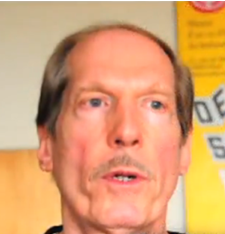
Though I’ve known for a while how important Tom is to Bill’s legacy, given what he’d told me about how he’d persuaded Bob to include Bill in the book as much as possible, I only recently realized that this story-behind-the-story should be documented. In my eyes, what Tom did on Bill’s behalf was heroic.
Interview answers © Thomas Andrae 2014.
How did you come to co-author Bob Kane’s autobiography Batman & Me?
I had done an interview with Jerry Siegel and Joe Shuster in 1981. It was reprinted in the Overstreet Price Guide in 1988, in celebration of Superman’s fiftieth anniversary. I thought it might be a good idea to follow this up with an interview with Bob Kane for Batman’s fiftieth anniversary in the 1989 Price Guide, so I contacted Bob and he was amenable to the project.
When I went down to interview Bob, he told me that he had written his autobiography. [It was] a very long manuscript (about 800 pages) that wasn’t publishable. It was too self-centered according to those of us who read it. There were far too many uses of “I” in it, for example.
[But] I...thought, in the interest of comics history, the manuscript should be published, [so I] offered to find a publisher.
What was your job/primary work focus at the time?
I was a graduate student and working for Bruce Hamilton at Another Rainbow Publishing as an editor of the Carl Barks Library 30-volume set of his works.
 Carl Barks and Tom Andrae
Carl Barks and Tom Andrae
Had you met Bob before you began the book?
This was the first time I contacted him.
What was your first impression of Bob?
He was a very charming guy and quite friendly. Bruce Hamilton and I went down to L.A. together to meet him. After the inteview, we went out to dinner with him and his wife Elizabeth.
Did you meet with him in person to discuss/write the book? If so, how often and where? If not, how did you work together?
I didn’t meet with him again in person. We had many phone discussions and some correspondence for about a year or more while working on the book and when we were producing and marketing it. In this period I got to know Bob quite well, and he seemed fairly open about his life, up to a point. I felt that we were friends.
I edited [the book], took out some chapters, and created a number of new chapters based on interviews with him and on my own research. All in all I probably wrote close to half the book in this manner.
Did your impression of him change during the process?
Yes. He had a tremendous ego, although he was very insecure. I asked for a byline and got one. He pretty much had to do this: I was supposed to get the manuscript into publishable shape—which was quite a task. I was responsible for not only rewriting the book but for advertising it, formatting it, and getting a publisher for it.
But he told the publisher that my byline was too big so they reduced its size. From what I gather from others who had worked with Bob, I think that I was lucky to receive a byline at all. It may have been a first.
How was he to work with?
Pretty easy, but he could be temperamental. When Bob Overstreet decided to go with a Jerry Robinson cover rather than one by Bob, [Bob] threatened to nix the publication of the interview. I convinced him otherwise, because we were taking orders for the book in an ad in the Price Guide and it would have sabotaged the book project to kill printing the interview.
No one wanted to publish his bio until I asked Eclipse to do it. I got the idea to take out a pre-publication ad for the book that appeared in the 1989 Price Guide. We received 1,500 orders; that proved it was a viable project and helped get a publisher for it. I did all the work in this initial stage of order-taking.
Do you remember how the subject of Bill Finger first came up during the process?
Yes. Bob felt guilty about how he had treated Bill, although he was afraid to acknowledge Bill as co-creator of Batman, or to give him a byline, for fear it might open the door to a challenge to Bob’s legal status as the sole creator of Batman. He feared a [Finger] byline would quite negatively impact his Batman royalties.
What was Bob’s reaction when you suggested including Bill?
It was Bob’s idea to give Bill some credit for having invented aspects of the costume and for creating the Joker. But Bob also claimed he co-created many of the villains since he, Bill, and Jerry discussed everything before it was published and Bob drew the art for the stories with the characters.
But Bob was mistaken about who created what, such as the Penquin or Catwoman, which were Bill’s creations, and Jerry did much of the art as well, with Bob and sometimes without him. In general, Bob failed to give Bill credit for creating most of Batman’s villains, claiming that he created them. Bob’s memory was not very good. Also, he was willing to go only so far in giving Bill credit.
I tried to add more about Bill’s contributions in creating the initial concept and image of Batman, but Bob refused to include them, claiming that he, not Bill, was the creator of Batman, which was a gross exaggeration.
Did Bob express—or did you glean—his personal feeling about Bill Finger?
I think he liked Bill and genuinely felt guilty about how he had treated him and how Bill ended up in near poverty when he died. Bob confessed that his ego prevented him from giving Bill the credit he deserved. But his attempt to remedy this was, in my mind, quite, quite inadequate. Also, he never gave others, like Shelly Moldoff, who was his ghost artist for twenty years, any credit, nor Jerry Robinson for his creation of the Joker. Bob expressed a lot of anger towards Jerry, stemming, I think, from being jealous of him, of his artistic ability, and of the recognition that he had received.
When you say “Bob confessed that his ego prevented him from giving Bill the credit he deserved,” what do you mean exactly—that Bob was willing to say in print that Bill’s name deserves to be on Batman (as the book does) but not go so far as to ask DC to officially change the credit line?
I think he meant that he should have put Bill’s name on the Batman strip when it appeared. But the point is moot because I don’t think he would ever put Bill’s name on Batman. He never gave byline credit to any of his ghosts.
What do you remember about the passage that stands out most to me: “Now that my long-time friend and collaborator is gone, I must admit that Bill never received the fame and recognition he deserved. He was an unsung hero ... I often tell my wife, if I could go back fifteen years, before he died, I would like to say ‘I’ll put your name on it now. You deserve it.’” How did Bob feel to include that—nervous? Conflicted? Redeemed? Other?
I believe that Bob sincerely felt some remorse about how he had treated Bill. He describes his spiritual conversion in Batman & Me. But Bob never felt guilty enough, in my estimation, or realized the full extent of Bill’s contribution. Bob was asked to give Bill credit as co-creator by the Finger estate when the first Batman feature film was in production and he declined.
Have you seen my account of this? If so, do you remember any other details that I didn’t cover?
I’m reporting what Bob told me about his decision in a conversation with him. I don’t think you covered this.
How did you feel convincing Bob to include more Bill?
I felt that it was a slight victory in correcting a massive injustice, but too little too late.
Did you talk with Bob’s wife Elizabeth during the process? If so, how was that/she?
She was a very nice, sweet person, but knew little about Bob’s work, so we didn’t talk about the book.
Do you know what her reaction was when Bob would tell her that he felt Bill deserved credit for Batman? Perhaps first I should ask if you believe he actually did tell her that?
Yes, he did, but I don’t know what her reaction was.
Do you remember if you asked Bob if he would consider recasting his contract with DC Comics to reflect his statement about Bill? If so, what was his response?
He was not amenable to this and told me so.
How honest do you feel Bob was in recounting stories?
I think he was fairly honest but too self-centered to see reality clearly enough and had a bad memory to boot. His ego was always in the way. He primarily remembered what he did on Batman—and that was usually inflated—rather than others’ contributions. I constantly had to fact-check what he told me because he had a predisposition to aggrandize his work on Batman.
What was the media response to the book?
We got some favorable media attention, but not going on The Tonight Show like Bob thought would happen.
What was Bob’s feeling about the final product? Do you think it got the recognition he wanted? Do you think he did not get anything he wanted from it?
He liked the book very much and frequently carried it around with him when he went on public appearances. But he was a little disgruntled that I cut out some of his nostalgic asides. He was a garrulous writer. No one would publish it until I asked Dean Mulanney and Cat Yronwode to do it. I designed four editions including a signed edition with Bob’s original art that sold very well. I think Bob made over $200,000 on the book plus more on the second edition
Professionally, what did the book do for your career?
Nothing in academia but I got some credibility among fans and the popular press.
Is there anything about the book you would now change if you could?
Give full credit to Bill as Batman’s co-creator and give him a byline indicating that, and give full credit to Jerry Robinson and the other artists who did much of the work that Bob got credit for. I would have liked Bob to publicly acknowledge Jerry as the Joker’s creator and Shelly Moldoff as the chief artist on Batman for the decades that he drew the strip.
Were you involved with the “sequel,” Batman & Me: The Saga Continues? If so, how was that process compared to working on the first autobiography?
Yes. I edited most of the new material; Bob took my name off the cover (though it’s still on the title page).
What do you think Bob Kane’s legacy is?
I think that Bob was responsible for creating the original germ of the idea of a Batman superhero, which Bill fleshed out and made viable, and for partially drawing the strip for a number of years. I think that Bob’s art, crude as it was, gave the strip an Expressionistic, nightmarish look which helped establish the gothic ambiance of the early stories. To me, the art he did with Jerry as his ghost was very compelling. Thus he made a great contribution to Batman’s legacy. Unfortunately his treatment of Bill, Jerry, and Shelly is a dishonorable part of that legacy.
Anything you’d like to add?
Thanks for giving me the opportunity to talk about my role in creating the book. This is the first time I’ve done so publicly.
Also of note in that release: no use of the word “creator.”
In 1989, coinciding with Tim Burton’s Batman, Bob Kane’s autobiography came out.

But as with most of the output Bob’s name is on, he did not create it alone. His co-author was Thomas Andrae, who through my Bill Finger research became a friend.

Though I’ve known for a while how important Tom is to Bill’s legacy, given what he’d told me about how he’d persuaded Bob to include Bill in the book as much as possible, I only recently realized that this story-behind-the-story should be documented. In my eyes, what Tom did on Bill’s behalf was heroic.
Interview answers © Thomas Andrae 2014.
How did you come to co-author Bob Kane’s autobiography Batman & Me?
I had done an interview with Jerry Siegel and Joe Shuster in 1981. It was reprinted in the Overstreet Price Guide in 1988, in celebration of Superman’s fiftieth anniversary. I thought it might be a good idea to follow this up with an interview with Bob Kane for Batman’s fiftieth anniversary in the 1989 Price Guide, so I contacted Bob and he was amenable to the project.
When I went down to interview Bob, he told me that he had written his autobiography. [It was] a very long manuscript (about 800 pages) that wasn’t publishable. It was too self-centered according to those of us who read it. There were far too many uses of “I” in it, for example.
[But] I...thought, in the interest of comics history, the manuscript should be published, [so I] offered to find a publisher.
What was your job/primary work focus at the time?
I was a graduate student and working for Bruce Hamilton at Another Rainbow Publishing as an editor of the Carl Barks Library 30-volume set of his works.
 Carl Barks and Tom Andrae
Carl Barks and Tom Andrae
Had you met Bob before you began the book?
This was the first time I contacted him.
What was your first impression of Bob?
He was a very charming guy and quite friendly. Bruce Hamilton and I went down to L.A. together to meet him. After the inteview, we went out to dinner with him and his wife Elizabeth.
Did you meet with him in person to discuss/write the book? If so, how often and where? If not, how did you work together?
I didn’t meet with him again in person. We had many phone discussions and some correspondence for about a year or more while working on the book and when we were producing and marketing it. In this period I got to know Bob quite well, and he seemed fairly open about his life, up to a point. I felt that we were friends.
I edited [the book], took out some chapters, and created a number of new chapters based on interviews with him and on my own research. All in all I probably wrote close to half the book in this manner.
Did your impression of him change during the process?
Yes. He had a tremendous ego, although he was very insecure. I asked for a byline and got one. He pretty much had to do this: I was supposed to get the manuscript into publishable shape—which was quite a task. I was responsible for not only rewriting the book but for advertising it, formatting it, and getting a publisher for it.
But he told the publisher that my byline was too big so they reduced its size. From what I gather from others who had worked with Bob, I think that I was lucky to receive a byline at all. It may have been a first.
How was he to work with?
Pretty easy, but he could be temperamental. When Bob Overstreet decided to go with a Jerry Robinson cover rather than one by Bob, [Bob] threatened to nix the publication of the interview. I convinced him otherwise, because we were taking orders for the book in an ad in the Price Guide and it would have sabotaged the book project to kill printing the interview.
No one wanted to publish his bio until I asked Eclipse to do it. I got the idea to take out a pre-publication ad for the book that appeared in the 1989 Price Guide. We received 1,500 orders; that proved it was a viable project and helped get a publisher for it. I did all the work in this initial stage of order-taking.
Do you remember how the subject of Bill Finger first came up during the process?
Yes. Bob felt guilty about how he had treated Bill, although he was afraid to acknowledge Bill as co-creator of Batman, or to give him a byline, for fear it might open the door to a challenge to Bob’s legal status as the sole creator of Batman. He feared a [Finger] byline would quite negatively impact his Batman royalties.
What was Bob’s reaction when you suggested including Bill?
It was Bob’s idea to give Bill some credit for having invented aspects of the costume and for creating the Joker. But Bob also claimed he co-created many of the villains since he, Bill, and Jerry discussed everything before it was published and Bob drew the art for the stories with the characters.
But Bob was mistaken about who created what, such as the Penquin or Catwoman, which were Bill’s creations, and Jerry did much of the art as well, with Bob and sometimes without him. In general, Bob failed to give Bill credit for creating most of Batman’s villains, claiming that he created them. Bob’s memory was not very good. Also, he was willing to go only so far in giving Bill credit.
I tried to add more about Bill’s contributions in creating the initial concept and image of Batman, but Bob refused to include them, claiming that he, not Bill, was the creator of Batman, which was a gross exaggeration.
Did Bob express—or did you glean—his personal feeling about Bill Finger?
I think he liked Bill and genuinely felt guilty about how he had treated him and how Bill ended up in near poverty when he died. Bob confessed that his ego prevented him from giving Bill the credit he deserved. But his attempt to remedy this was, in my mind, quite, quite inadequate. Also, he never gave others, like Shelly Moldoff, who was his ghost artist for twenty years, any credit, nor Jerry Robinson for his creation of the Joker. Bob expressed a lot of anger towards Jerry, stemming, I think, from being jealous of him, of his artistic ability, and of the recognition that he had received.
When you say “Bob confessed that his ego prevented him from giving Bill the credit he deserved,” what do you mean exactly—that Bob was willing to say in print that Bill’s name deserves to be on Batman (as the book does) but not go so far as to ask DC to officially change the credit line?
I think he meant that he should have put Bill’s name on the Batman strip when it appeared. But the point is moot because I don’t think he would ever put Bill’s name on Batman. He never gave byline credit to any of his ghosts.
What do you remember about the passage that stands out most to me: “Now that my long-time friend and collaborator is gone, I must admit that Bill never received the fame and recognition he deserved. He was an unsung hero ... I often tell my wife, if I could go back fifteen years, before he died, I would like to say ‘I’ll put your name on it now. You deserve it.’” How did Bob feel to include that—nervous? Conflicted? Redeemed? Other?
I believe that Bob sincerely felt some remorse about how he had treated Bill. He describes his spiritual conversion in Batman & Me. But Bob never felt guilty enough, in my estimation, or realized the full extent of Bill’s contribution. Bob was asked to give Bill credit as co-creator by the Finger estate when the first Batman feature film was in production and he declined.
Have you seen my account of this? If so, do you remember any other details that I didn’t cover?
I’m reporting what Bob told me about his decision in a conversation with him. I don’t think you covered this.
How did you feel convincing Bob to include more Bill?
I felt that it was a slight victory in correcting a massive injustice, but too little too late.
Did you talk with Bob’s wife Elizabeth during the process? If so, how was that/she?
She was a very nice, sweet person, but knew little about Bob’s work, so we didn’t talk about the book.
Do you know what her reaction was when Bob would tell her that he felt Bill deserved credit for Batman? Perhaps first I should ask if you believe he actually did tell her that?
Yes, he did, but I don’t know what her reaction was.
Do you remember if you asked Bob if he would consider recasting his contract with DC Comics to reflect his statement about Bill? If so, what was his response?
He was not amenable to this and told me so.
How honest do you feel Bob was in recounting stories?
I think he was fairly honest but too self-centered to see reality clearly enough and had a bad memory to boot. His ego was always in the way. He primarily remembered what he did on Batman—and that was usually inflated—rather than others’ contributions. I constantly had to fact-check what he told me because he had a predisposition to aggrandize his work on Batman.
What was the media response to the book?
We got some favorable media attention, but not going on The Tonight Show like Bob thought would happen.
What was Bob’s feeling about the final product? Do you think it got the recognition he wanted? Do you think he did not get anything he wanted from it?
He liked the book very much and frequently carried it around with him when he went on public appearances. But he was a little disgruntled that I cut out some of his nostalgic asides. He was a garrulous writer. No one would publish it until I asked Dean Mulanney and Cat Yronwode to do it. I designed four editions including a signed edition with Bob’s original art that sold very well. I think Bob made over $200,000 on the book plus more on the second edition
Professionally, what did the book do for your career?
Nothing in academia but I got some credibility among fans and the popular press.
Is there anything about the book you would now change if you could?
Give full credit to Bill as Batman’s co-creator and give him a byline indicating that, and give full credit to Jerry Robinson and the other artists who did much of the work that Bob got credit for. I would have liked Bob to publicly acknowledge Jerry as the Joker’s creator and Shelly Moldoff as the chief artist on Batman for the decades that he drew the strip.
Were you involved with the “sequel,” Batman & Me: The Saga Continues? If so, how was that process compared to working on the first autobiography?
Yes. I edited most of the new material; Bob took my name off the cover (though it’s still on the title page).
What do you think Bob Kane’s legacy is?
I think that Bob was responsible for creating the original germ of the idea of a Batman superhero, which Bill fleshed out and made viable, and for partially drawing the strip for a number of years. I think that Bob’s art, crude as it was, gave the strip an Expressionistic, nightmarish look which helped establish the gothic ambiance of the early stories. To me, the art he did with Jerry as his ghost was very compelling. Thus he made a great contribution to Batman’s legacy. Unfortunately his treatment of Bill, Jerry, and Shelly is a dishonorable part of that legacy.
Anything you’d like to add?
Thanks for giving me the opportunity to talk about my role in creating the book. This is the first time I’ve done so publicly.
Published on March 30, 2014 04:00
March 27, 2014
“New” photos of Mick Smiley of “Magic” (from “Ghostbusters”)
I was happy to receive an email from a Phil Z., the guitarist of a late 1970s band out of Hawaii called Hamlet. The band also featured Mick Smiley…before he became Mick Smiley. (I’m not at liberty to reveal his original name.)
You may not realize that you already know Mick—if you’ve seen Ghostbusters, that is. And who hasn’t?
Mick was the mind and voice behind a distinctive song from its soundtrack and one of the more hypnotic songs you’ll ever hear: “Magic.”
After years of having the pleasure of listening to that song, I had the privilege of interviewing Mick.
Phil mentioned a few songs by Mick’s follow up band—the Mick Smiley Band: “Hello There,” “Big Brown Eyes,” Oh Linda! 461-7264,” and “Room at the Top.”
“I remember being a youngster backstage between shows in the green room with Mick Smiley and Lou Reed,” Phil wrote. “It was such a cool time! I was just a kid.”
And who wasn’t?



 at the Troubadour in Hollywood, 1979
at the Troubadour in Hollywood, 1979
You may not realize that you already know Mick—if you’ve seen Ghostbusters, that is. And who hasn’t?
Mick was the mind and voice behind a distinctive song from its soundtrack and one of the more hypnotic songs you’ll ever hear: “Magic.”
After years of having the pleasure of listening to that song, I had the privilege of interviewing Mick.
Phil mentioned a few songs by Mick’s follow up band—the Mick Smiley Band: “Hello There,” “Big Brown Eyes,” Oh Linda! 461-7264,” and “Room at the Top.”
“I remember being a youngster backstage between shows in the green room with Mick Smiley and Lou Reed,” Phil wrote. “It was such a cool time! I was just a kid.”
And who wasn’t?



 at the Troubadour in Hollywood, 1979
at the Troubadour in Hollywood, 1979
Published on March 27, 2014 04:00
March 25, 2014
The SAG Actors to Locate hotline
For years, the Screen Actors Guild ran a toll-free phone number called “Actors to Locate.”
Though designed for casting directors and journalists, in practice anyone could use it to request contact info for up to three film actors per call; no charge, no automated system (yes, a live person answered), no questions asked. (Of course, they would not give out personal phone numbers or addresses but rather, typically, the number of the actor’s agent or manager.)
Though the info on file was sometimes outdated, this service helped in my research for Bill the Boy Wonder: The Secret Co-Creator of Batman and particularly as I prepared my two big interview series to date: ‘70s and ‘80s superhero entertainers and music video ingénues.
In 2012, SAG merged with AFTRA (American Federation of Television and Radio Artists), and perhaps as part of that reorg, the Actors to Locate number went away, despite what this December 2013 screenshot from the SAG-AFTRA site indicates:
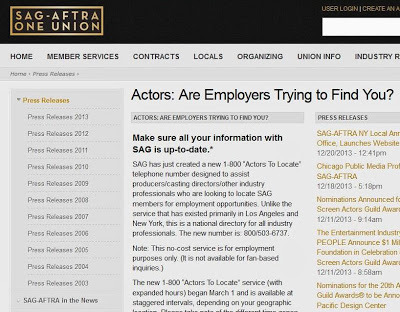
However, the service did not…it was reborn as a web-only feature (which is more efficient anyway).
But reborn with another change.
I was told that SAG-AFTRA would now give access to what they had renamed iActor only to casting directors or producers who are working with SAG-AFTRA projects and no longer to people seeking members for charitable organizations, personal appearances, speaking requests, interview requests, or modeling requests.
In other words, I was no longer eligible.
I called to ask if I could appeal. The person I reached kindly said she had heard from a number of people who fell outside the “casting directors and producers” category, many with what seemed to be valid reasons for wanting access to iActor. She suggested I plead my case in writing and she’d submit it—with others—to the decision makers.
This is what I submitted:
It worked.
I was granted access.
And so the intermittent Hollywood-related research continues.
Though designed for casting directors and journalists, in practice anyone could use it to request contact info for up to three film actors per call; no charge, no automated system (yes, a live person answered), no questions asked. (Of course, they would not give out personal phone numbers or addresses but rather, typically, the number of the actor’s agent or manager.)
Though the info on file was sometimes outdated, this service helped in my research for Bill the Boy Wonder: The Secret Co-Creator of Batman and particularly as I prepared my two big interview series to date: ‘70s and ‘80s superhero entertainers and music video ingénues.
In 2012, SAG merged with AFTRA (American Federation of Television and Radio Artists), and perhaps as part of that reorg, the Actors to Locate number went away, despite what this December 2013 screenshot from the SAG-AFTRA site indicates:

However, the service did not…it was reborn as a web-only feature (which is more efficient anyway).
But reborn with another change.
I was told that SAG-AFTRA would now give access to what they had renamed iActor only to casting directors or producers who are working with SAG-AFTRA projects and no longer to people seeking members for charitable organizations, personal appearances, speaking requests, interview requests, or modeling requests.
In other words, I was no longer eligible.
I called to ask if I could appeal. The person I reached kindly said she had heard from a number of people who fell outside the “casting directors and producers” category, many with what seemed to be valid reasons for wanting access to iActor. She suggested I plead my case in writing and she’d submit it—with others—to the decision makers.
This is what I submitted:
I’m the author of more than 70 books including Boys of Steel: The Creators of Superman. My work has been covered by The Hollywood Reporter, NPR’s All Things Considered, The Today Show, USA Today, Forbes, NBC, ABC, PBS, MTV, Yahoo; two of my books inspired a TED talk.
I often profile former actors who have long been out of the spotlight yet are still fondly remembered by fans, the kind of people who have never been interviewed before and are, in most cases, thrilled and honored that someone took the time and effort to track them down. In doing so, I have been able to help some of these inactive performers receive royalties that had been accumulating for them but which could not be sent because SAG/etc. did not have their current contact info and did not have luck finding them.
Whenever combining whatever info SAG had with my own detective work has led to success, I direct the talent back to SAG to update their record. Sometimes once they are “found,” they then are hired to appear at conventions for which they are paid. They are very grateful.
Among the people I found and directed to update their SAG record:
Bill Finger’s estate Charles Sinclair Garrett Craig Bo Rucker Buster Jones Sandra Wilder Kymberly Herrin
Examples of my work in which SAG is invaluable:
‘70s and ‘80s superhero entertainers interview seriesmusic video ingénues interview series
Creating such content is hard enough as it is, and even harder without access to agents/managers (though many of these people no longer have agents).
Such features benefit all involved, both emotionally and financially—it gives former performers a chance to discover they have fans (and often royalties) and gives fans original, hard-to-come-by interviews/content. It seems to me that this is one beneficial application of the iActor service.
For these reasons, I am hoping to appeal and get access to iActor just as I had to Actors to Locate. I hope it is clear that I don’t abuse the privilege; I use it to help and showcase others.
Thank you for your time. I look forward to your response.
It worked.
I was granted access.
And so the intermittent Hollywood-related research continues.
Published on March 25, 2014 04:00
March 24, 2014
Noirish tributes to Bill Finger's most iconic creations
Courtesy of the thorough and tireless and stylish Bill Finger Appreciation Group:
 Batman
Batman
 Robin (Dick Grayson)
Robin (Dick Grayson)
 Green Lantern (Alan Scott)
Green Lantern (Alan Scott)
 Joker
Joker
 Catwoman
Catwoman

Penguin
 Commissioner James Gordon
Commissioner James Gordon

Lana Lang

Riddler
 Wildcat
Wildcat
 Bat-Mite
Bat-Mite
 Catman
Catman
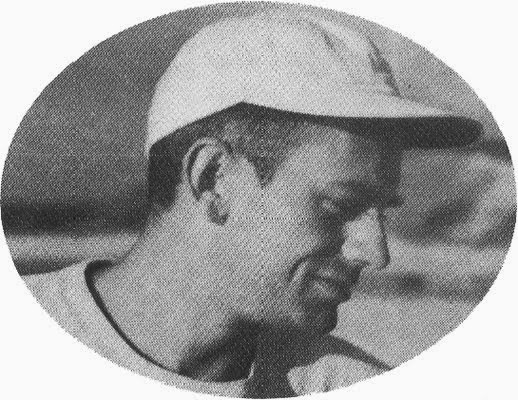 A profile now recognizable among Batman fans
A profile now recognizable among Batman fans
 Batman
Batman Robin (Dick Grayson)
Robin (Dick Grayson) Green Lantern (Alan Scott)
Green Lantern (Alan Scott) Joker
Joker Catwoman
Catwoman 
Penguin
 Commissioner James Gordon
Commissioner James Gordon
Lana Lang

Riddler
 Wildcat
Wildcat Bat-Mite
Bat-Mite Catman
Catman A profile now recognizable among Batman fans
A profile now recognizable among Batman fans
Published on March 24, 2014 04:00
March 23, 2014
Buster Jones, AKA Black Vulcan
I interviewed voice actor Buster Jones for the Super ‘70s and ‘80s series.
More images Buster sent:


 Buster recently in Los Angeles
Buster recently in Los Angeles
More images Buster sent:


 Buster recently in Los Angeles
Buster recently in Los Angeles
Published on March 23, 2014 04:00
March 22, 2014
An igloo and disco ball in Charlottesville, VA
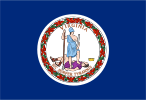

On 3/20-21/14, I had the privilege of speaking at four schools in lovely Charlottesville, VA:
Stone-Robinson ElementaryBaker-Butler ElementaryAgnor-Hurt ElementarySutherland Middle
This school district obviously has a thing for hyphens.
And flair.
Baker-Butler had on display an actual size igloo ingeniously made by librarian Anita Mays and a partner…out of empty milk containers.


They followed the procedure as described in the 1981 book propped up on the black cube (only subbing gallon jugs for snow bricks). They also turned the installation into a teaching moment, as seen by the question posed on the whiteboard.
Speaking of ingenious, Baker-Butler also showcased a 2nd grade art project involving two notable artists. This is one mashup I’d not seen before, and I think it’s wonderful.

Sutherland was holding a school event immediately following my afternoon presentation. Spot the clue:

Answer:
You can tell by the way I use my walk
I’m in middle school
No time to talk
Thank you to the four librarians who hosted me, and to the Virginia Festival of the Book for arranging the visits.
Published on March 22, 2014 04:00
March 19, 2014
Clark Kent’s grandson

On 2/24/14, I had the honor of presenting at Gregory-Portland Intermediate School in Portland, TX (near Corpus Christi) for the second year in a row.
Another round of thanks to Cati (first syllable rhymes with “cat,” not “Kate”) Partridge for inviting me to speak with her students.
As before, the school (particularly library aide Cindy) created award-worthy displays to welcome me:

 Prop pay phone!
Prop pay phone! (I told Cati that there is no pressure to outdo themselves each time!)
And I had another honor this trip: I got to meet the genuine and articulate Ron Dennis, who is a friend of Cati’s and who is the grandson of Walter Dennis…who is a possible visual inspiration for Clark Kent.
I’d forgotten that I already knew of Walter; he is mentioned (and pictured!) in Superman: The Complete History.
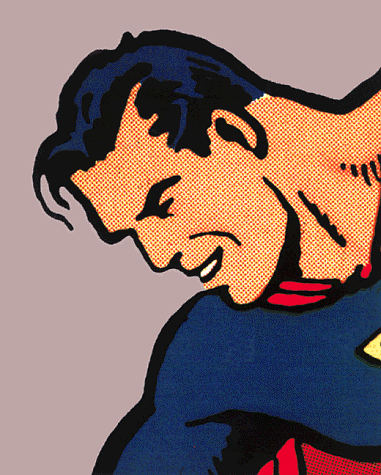 Superman: The Complete History by Les Daniels
Superman: The Complete History by Les Daniels Superman: The Complete History, page 19
Superman: The Complete History, page 19Ron was kind to answer some questions:
TK - sorry!
 me with Clark Kent
me with Clark Kent me with Superman
me with Superman
Published on March 19, 2014 04:00
March 18, 2014
Author AWOL
I’ve published about 75 books and my name is properly on the cover of about 73 of them.
In my first years as an author, I wrote quite a few work-for-hire books. Educational publishers would develop a series (on, say, animals or countries) and divvy up the titles among multiple writers. They’d email me a list of the available topics and I’d choose the ones that most appealed, but often, the overarching subject was not a particular passion. It was a chance to get paid to write, which was closer to my goal than getting paid to do something in an office.
Authors do not tend to read work-for-hire contracts as carefully as contracts in which we will be retaining ownership rights. Therefore, I did not know that I was agreeing to an undesirable credit situation until the book came out…and this happened two times.
The first instance was with a book published in 2005. I wrote a humorous yet practical guide called How to Do a Belly Flop , which was a companion to a book that I was not involved in, How to Give a Wedgie.
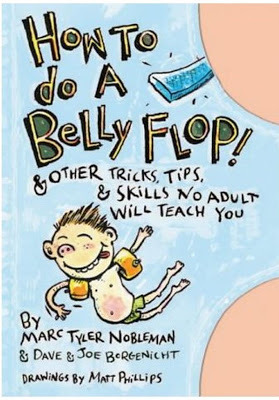 Did anyone not write this book?
Did anyone not write this book?
One of the authors of Wedgie was David Borgenicht, who also co-authored the massively successful Worst-Case Scenario Survival Handbook series. So the publishers of Belly Flop wanted to take marketing advantage of that name (and his brother’s, who apparently co-authored Wedgie).
I understand it. I just didn’t like being blindsided with not one but two names under mine on the cover of a book I wrote all by myself. But unlike Bill Finger, I was at least able to say that my name was there.
The second instance was with two short novels published in 2009:
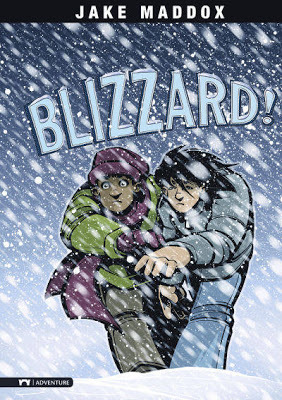
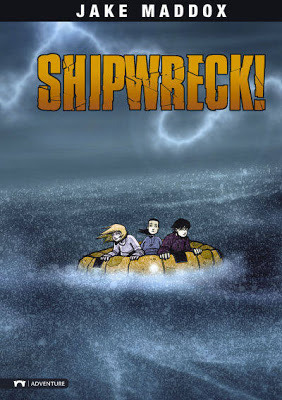
This case was a bit more galling because the name plastered on the cover was not even a real person. “Jake Maddox” was a pseudonym created for a large set of sports and adventure novels (written by various authors) so they would be shelved together.
My name is on the title page of these two books, but the wording rankled me.
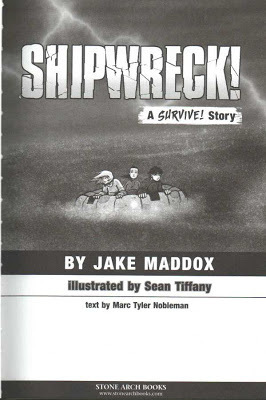
It doesn’t say “story by” but rather “text by,” which sounds mechanical, not creative. I realize the editor was trying to distinguish from the implied “written by,” but it sounds like I was the guy who typed in someone else’s words. As with Belly Flop, at least I am credited, but I wonder how young readers make sense of seeing both the mysterious Maddox and my name on the title page.
And now as I recount this, I’m vaguely remembering that the contracts for these two books actually may not have stated the possibility of assigning credit elsewhere, meaning even if I read them, I’d have been surprised when the books came out…but since I no longer have my copies of the contracts, I can’t doublecheck.
In my first years as an author, I wrote quite a few work-for-hire books. Educational publishers would develop a series (on, say, animals or countries) and divvy up the titles among multiple writers. They’d email me a list of the available topics and I’d choose the ones that most appealed, but often, the overarching subject was not a particular passion. It was a chance to get paid to write, which was closer to my goal than getting paid to do something in an office.
Authors do not tend to read work-for-hire contracts as carefully as contracts in which we will be retaining ownership rights. Therefore, I did not know that I was agreeing to an undesirable credit situation until the book came out…and this happened two times.
The first instance was with a book published in 2005. I wrote a humorous yet practical guide called How to Do a Belly Flop , which was a companion to a book that I was not involved in, How to Give a Wedgie.
 Did anyone not write this book?
Did anyone not write this book? One of the authors of Wedgie was David Borgenicht, who also co-authored the massively successful Worst-Case Scenario Survival Handbook series. So the publishers of Belly Flop wanted to take marketing advantage of that name (and his brother’s, who apparently co-authored Wedgie).
I understand it. I just didn’t like being blindsided with not one but two names under mine on the cover of a book I wrote all by myself. But unlike Bill Finger, I was at least able to say that my name was there.
The second instance was with two short novels published in 2009:


This case was a bit more galling because the name plastered on the cover was not even a real person. “Jake Maddox” was a pseudonym created for a large set of sports and adventure novels (written by various authors) so they would be shelved together.
My name is on the title page of these two books, but the wording rankled me.

It doesn’t say “story by” but rather “text by,” which sounds mechanical, not creative. I realize the editor was trying to distinguish from the implied “written by,” but it sounds like I was the guy who typed in someone else’s words. As with Belly Flop, at least I am credited, but I wonder how young readers make sense of seeing both the mysterious Maddox and my name on the title page.
And now as I recount this, I’m vaguely remembering that the contracts for these two books actually may not have stated the possibility of assigning credit elsewhere, meaning even if I read them, I’d have been surprised when the books came out…but since I no longer have my copies of the contracts, I can’t doublecheck.
Published on March 18, 2014 04:00
March 16, 2014
The first longer-form book on Bill Finger…
…is the second ever, and the first Spanish-language book on Bill Finger. The author is the ace researcher David Hernando.
A description:
A glimpse at the evolution of the cover, which ends beautifully:



Note the paperweight.
And radio.
And gimmick books.
And Popular Mechanics.
And tweed jacket.
And the shape of the papers on the floor...
As I alluded to above, Finger is in good hands here.
A description:
Batman: Serenata Nocturna. El origen del Caballero Oscuro (Batman: Night Serenade. The Origin of the Dark Knight) is a hardcover, 160-page Spanish book on Bill Finger to be published in Spain in May 2014. It follows, in a fiction style narrative, all of Bill Finger's life and legacy, based on interviews and statements from Dennis O'Neil, Jens Robinson, Gary Groth, Denis Kitchen, Michael Uslan, Brad Meltzer, Gerard Jones, Danny Fingeroth, Graham Nolan, and Alan Porter, among others, like the unique contributions from Marc Tyler Nobleman and Athena Finger, Bill’s only grandchild. The book will feature an introduction by Roy Thomas and a cover by Paco Roca, one of the best-selling graphic novel authors in Spain today.
A glimpse at the evolution of the cover, which ends beautifully:



Note the paperweight.
And radio.
And gimmick books.
And Popular Mechanics.
And tweed jacket.
And the shape of the papers on the floor...
As I alluded to above, Finger is in good hands here.
Published on March 16, 2014 04:00



